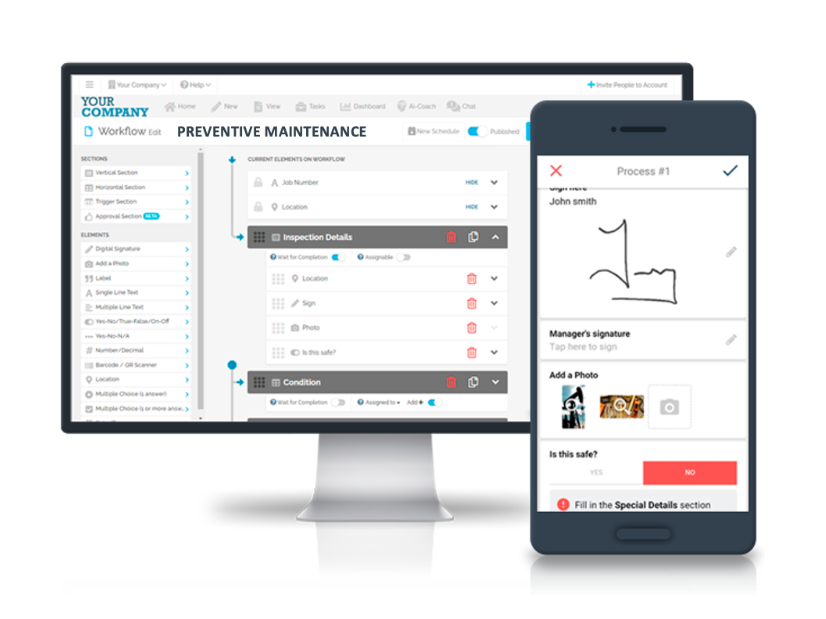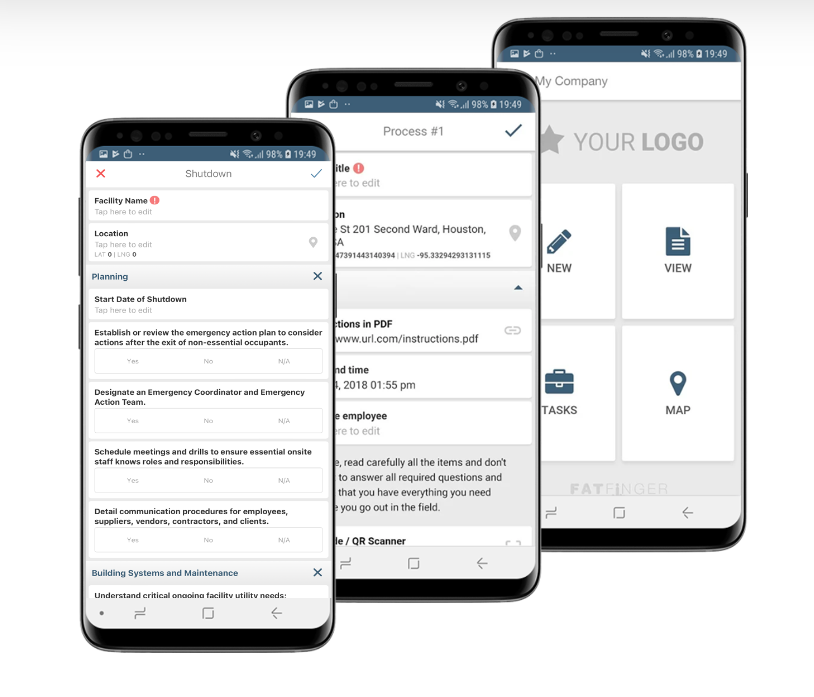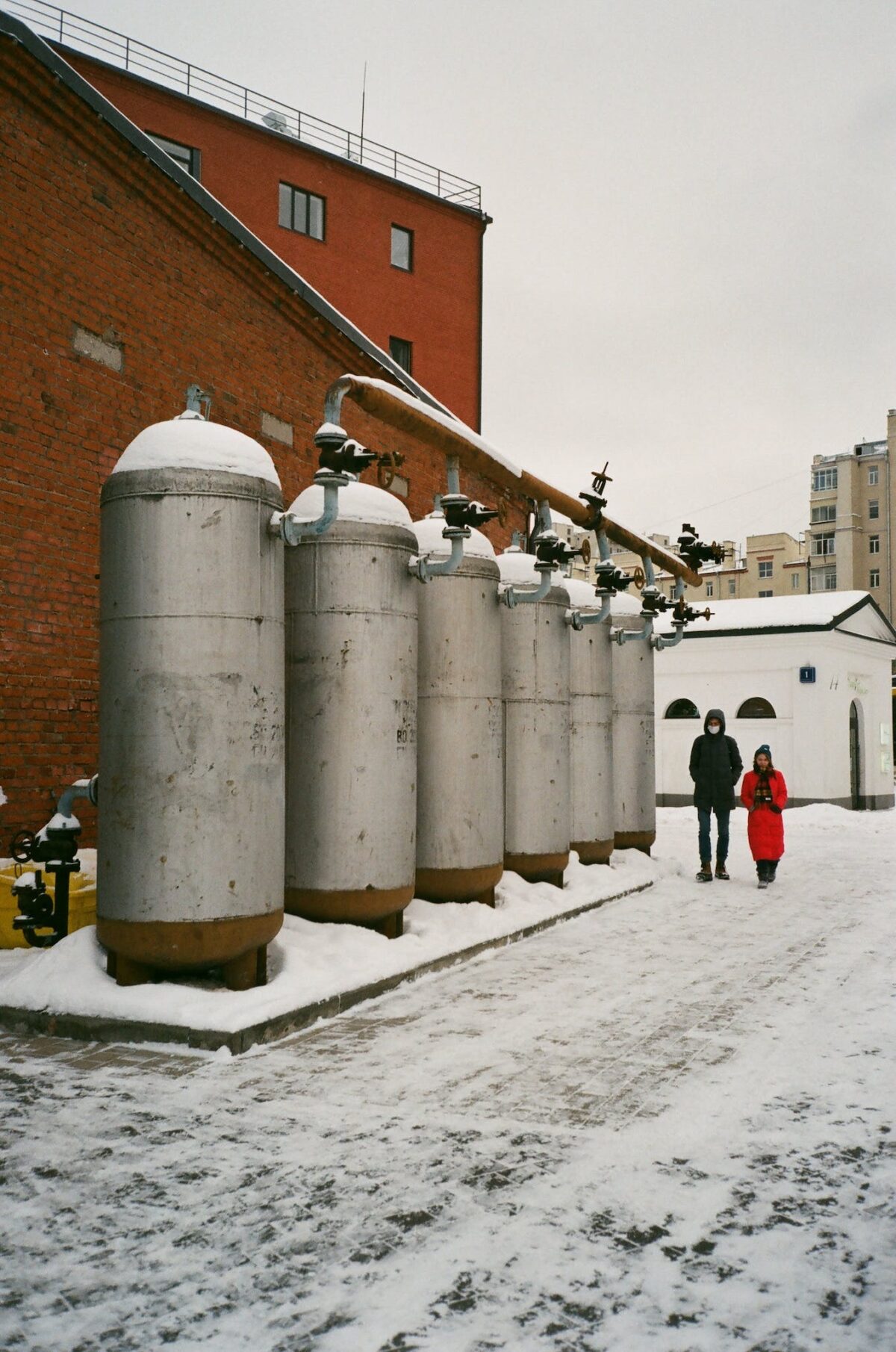Proper preventive maintenance of commercial water heaters is crucial to ensure consistent performance, prolong the unit’s lifespan, and prevent unexpected breakdowns.
This article presents a comprehensive preventive maintenance checklist to help keep your commercial water heater in optimal condition.
Preventive Maintenance Checklist

Commercial water heaters are the unsung heroes of many businesses, providing hot water for various applications, from washing dishes in restaurants to supplying hot water for showers in hotels. As such, conducting regular preventive maintenance is essential to ensure your water heater works efficiently and lasts for years.
Such a procedure should be conducted digitally using FAT FINGER to ensure:
- Your team follows all procedures
- Prevent unplanned downtime
- Collect critical maintenance data
The following are critical monthly, quarterly and annual maintenance activities to include in your preventive maintenance workflow:
1 – Monthly Inspection
Your monthly maintenance checklist should include the following maintenance activities:
Visual Inspection: Examine the water heater for any visible damage, rust, or corrosion signs. Pay close attention to the tank, pipes, and valves.
Temperature and Pressure Relief Valve (TPR Valve): Test the TPR valve by lifting the lever. Hot water should discharge, and when you release the lever, it should stop. If not, the valve might need replacement.
Check for Leaks: Examine all connections, pipes, and valves for any signs of leakage. Any leakage, even a minor one, can case severe damage if left unattended.
Heating Element Assessment: Inspect the heating elements for scale buildup or damage if you have an electric water heater. Clean or replace them as needed. For gas water heaters, ensure the burner is free from dirt and debris.
Ventilation: Ensure the area around the water heater has adequate ventilation. Proper ventilation prevents the accumulation of gas fumes.
Cleaning Sediment: Over time, sediment and mineral deposits can collect in the tank. This reduces the heating efficiency of your water heater. If you notice any sediment, flush the tank.
2 – Quarterly Maintenance
It’s also important to flush the tank and replace anodes every quarter.
Flushing the Tank
Flushing the tank helps maintain heating efficiency, reduces the risk of corrosion, and extends the lifespan of your commercial water heater.
Flush sediment from the tank by following these steps:
Turn Off Power: For electric water heaters, switch off the power at the breaker box. For gas heaters, set the control to the pilot position.
Attach a Hose: Connect one end of a hose to the tank’s drain valve and direct the other end to a drain.
Drain the Tank: Let water flow until it runs clear. This process removes sediment and mineral buildup.
Close the Valve: Once the water runs clear, turn off the drain valve.
Anode Rod Inspection
You typically need to replace anode rods annually, but it’s prudent to check it for corrosion quarterly. The anode rod helps prevent rust inside the tank. If it’s significantly corroded, replace it and check for contributing factors, as it shouldn’t corrode that fast.

3 – Semi-Annual Preventive Maintenance
Every 6 months, check that the heaters and pressure release valves are performing optimally. .
Inspect the Gas Water Heaters
Conduct the following checks on gas water heaters:
Burner Inspection: Examine the burner for any dirt or debris. Clean it if necessary.
Flame Color: Ensure the flame is blue. A yellow flame can indicate a problem.
Inspect Electric Water Heaters
If your boiler system is electric, do the following to inspect it:
Heating Elements: Check the heating elements for scale buildup or damage. Replace if needed.
Pressure Relief Valve Inspection
Perform a pressure test to check performance of the pressure release valve. A properly functioning pressure relief valve releases water when the pressure exceeds the set limit.
4 – Annual Preventive Maintenance Inspections

Lastly, conduct a comprehensive inspection annually. Annual professional inspections are vital as they provide an opportunity to thoroughly inspect for flaws that will likely cause major problems in the future. You can conduct annual inspections independently or as part of a turnaround procedure.
You should schedule the following maintenance inspections annually:
Anode Rod Replacement
Anode rods are aluminum or magnesium components suspended in the tank to protect it from corrosion. They corrode over time, diverting corrosive elements from the tank’s interior and extending its life.
Replacement Frequency: Anode rods should be checked annually and replaced when significantly corroded, typically every 2-5 years.
Replacement Process: To replace the anode rod, drain the tank, remove the old rod, and install a new one. This is a preventive measure to safeguard your water heater.
Efficiency Improvements
Efficiency improvements are essential for cost savings. They include the following:
Temperature Setting: Maintaining the water heater at the recommended temperature helps conserve energy while providing ample hot water.
Reduced Energy Costs: Regular maintenance, including cleaning, flushing, and anode rod replacement, ensures that your water heater operates efficiently, reducing energy consumption and, in turn, lowering utility costs.
Reliable Hot Water Supply: A well-maintained water heater saves energy and guarantees a continuous and reliable supply of hot water, which is essential for businesses.
Other Annual Inspections:
Besides anode replacement and efficiency improvements, you should also schedule these activities every year:
Sediment Removal: Hire a professional to remove accumulated sediment and check the anode rod.
Safety Inspection: A certified technician should conduct a safety inspection to ensure all safety features function correctly, reducing the risk of accidents and liability.
Comprehensive Assessment: Technicians will perform a thorough inspection of your water heater. This includes checking for leaks, verifying the functionality of safety valves, and assessing the condition of heating elements.
Safety Precautions During Preventive Maintenance
Besides the activities mentioned above, safety is also an important factor to consider during any maintenance work. You can enhance safety during maintenance by doing the following:
Power and Gas Shutdown: Before any inspection or maintenance, turn off the power supply for electric heaters or set gas heaters to the pilot position.
Ventilation: Ensure that the area where your water heater is located is well-ventilated. This is crucial to prevent gas buildup and ensure safety.
Safety Gear: Wear appropriate safety gear, including gloves and eye protection, to guard against burns and splashes.

Gas Leaks: Be cautious of gas leaks. If you smell gas, immediately shut off the gas supply and contact a professional.
Emergency Preparedness: Familiarize yourself with the emergency shut-off valve’s location for gas and water. In an emergency, you can quickly stop the gas or water flow.
Once again, you can plan all these safety checks using FAT FINGER’s Take 5 Safety checklist.
Conduct Preventive Maintenance with FAT FINGER
A well-maintained water heater is valuable for your business, ensuring a consistent hot water supply when needed.
By planning all maintenance activities in FAT FINGER, you can:
- Minimize the risk of unexpected breakdowns
- Reduce energy costs
- Extend the life of your unit

Sign up for FAT FINGER and enjoy:
- An easy-to-use, no-code, drag and drop interface
- Reliable data collected in real time
- Building safety workflows within minutes
- Real-time collaboration through instant communication with your team


